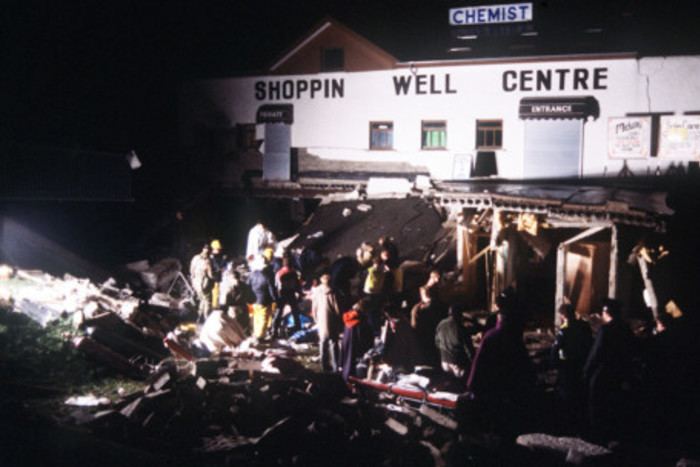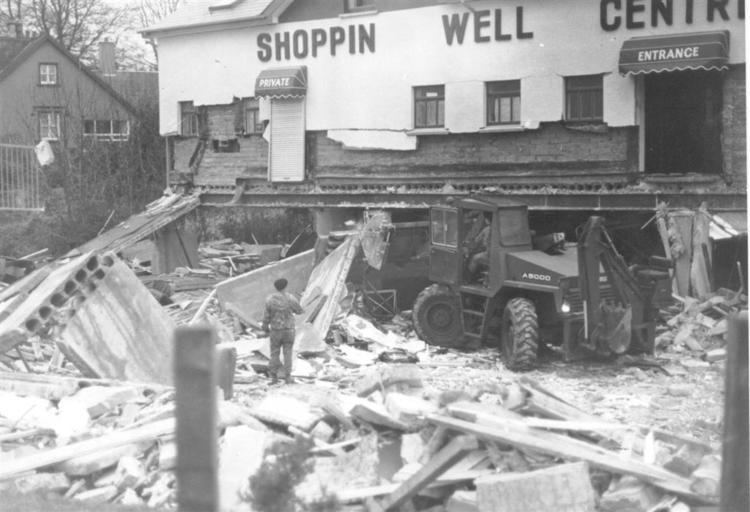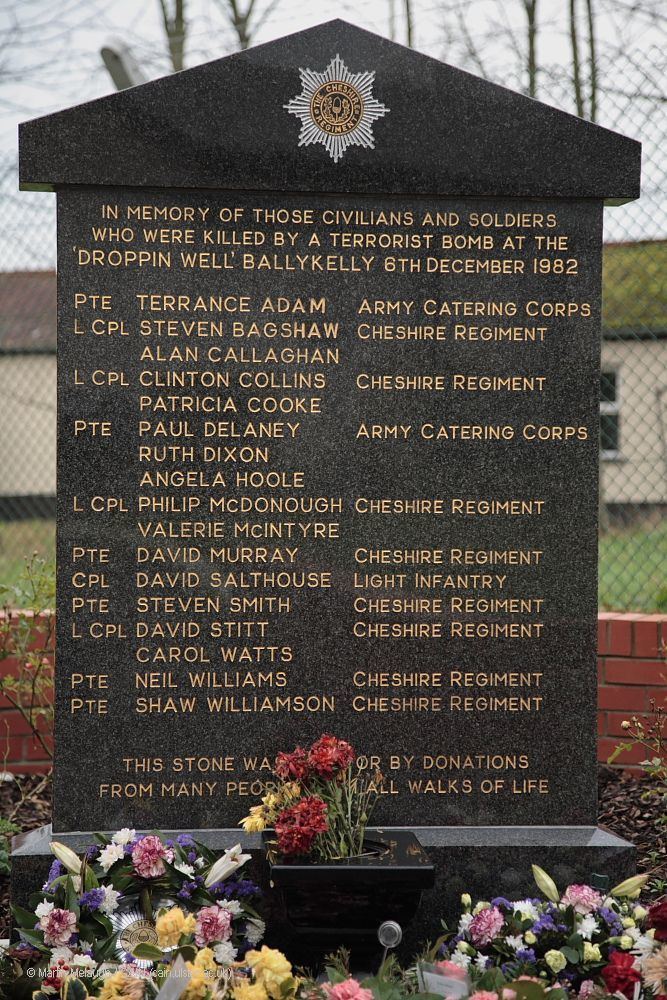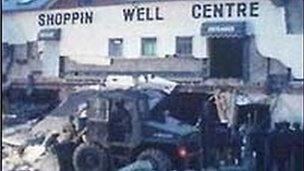Start date December 6, 1982 | Non-fatal injuries 30 Attack type Bomb | |
 | ||
Deaths 17(11 soldiers, 6 civilians) Similar Ramble Inn attack, Benny's Bar bombing, Glenanne barracks bombing, Springhill Massacre, 1973 Coleraine bombings | ||
The Droppin Well bombing or Ballykelly bombing occurred on 6 December 1982, when the Irish National Liberation Army (INLA) exploded a time bomb at a disco in Ballykelly, Northern Ireland. The disco, known as the Droppin Well, was targeted because it was frequented by British Army soldiers from nearby Shackleton Barracks. The bomb killed eleven soldiers and six civilians; 30 people were injured.
Contents

Attack

The bomb was made by INLA members in nearby Derry. One of those involved later revealed that the INLA unit had carried out reconnaissance missions to the Droppin Well to see if there were enough soldiers to justify the possibility of civilian casualties.

On the evening of Monday 6 December 1982, an INLA operative left a bomb inside the pub. There were about 150 people inside. The Royal Ulster Constabulary (RUC) believed that the bomb, estimated to be 5 to 10 pounds (2.3 to 4.5 kg) of commercial (Frangex) explosives, was small enough to fit into a handbag. It had, however, been left beside a support pillar and, when it exploded at about 23:15, the blast brought down the roof. Many of those killed and injured were crushed by fallen masonry.

Following the blast, it took many hours to pull survivors from the rubble. The last survivor was freed at 04:00, but it was not until 10:30 that the last of the bodies was recovered. Ultimately, 17 people died (11 soldiers, six civilians) and about 30 were injured, some seriously. Five of the civilians were young women and three (Alan Callaghan, Valerie McIntyre and Angela Maria Hoole) were teenagers. Of the eleven soldiers who died, eight were from the 1st Battalion Cheshire Regiment, two from the Army Catering Corps and one from the Light Infantry. One of those on the scene was Bob Stewart, then a company commander in the Cheshire Regiment. He lost six soldiers from his company and was deeply affected as he tended to the dead and injured.
Aftermath

Suspicion immediately fell upon the Provisional Irish Republican Army (IRA), who denied involvement. By 8 December, the British Army was blaming the INLA on grounds that the IRA, in a mixed village, would have made greater efforts not to risk killing civilians.
Shortly afterwards, the INLA issued a statement of responsibility:

We believe that it is only attacks of such a nature that bring it home to people in Britain and the British establishment. The shooting of an individual soldier, for the people of Britain, has very little effect in terms of the media or in terms of the British administration.
The INLA also described the civilians killed as "consorts". The attack was criticised by many on both sides of the conflict in Northern Ireland due to the high loss of civilian lives. Soon after the INLA had issued its statement, the government of the Republic of Ireland banned the INLA, making membership punishable by seven years imprisonment.
In an interview after the bombing, INLA leader Dominic McGlinchey said that the Droppin Well's owner had been warned six times to stop offering "entertainment" to British soldiers. McGlinchey added that the owner, and those who socialised with the soldiers, "knew full well that the warnings had been given and that the place was going to be bombed at some stage". It later emerged that the INLA may also have targeted Ballykelly because it believed that the military base was part of NATO's radar and communications network.
Six days after the bombing, RUC officers shot dead INLA members Seamus Grew and Roddie Carroll near a vehicle checkpoint in Armagh. The officers said they believed that the two men were ferrying McGlinchey into Northern Ireland. Neither was armed, nor was McGlinchey in their car.
Convictions
In June 1986, four INLA members (Anna Moore, Eamon Moore, Helena Semple and Patrick Shotter) received life sentences for the attack. Anna Moore would later marry loyalist Bobby Corry, whilst both were in prison. Another woman was given ten years for manslaughter as the court believed she had been coerced into involvement. All of those convicted were from Derry.
